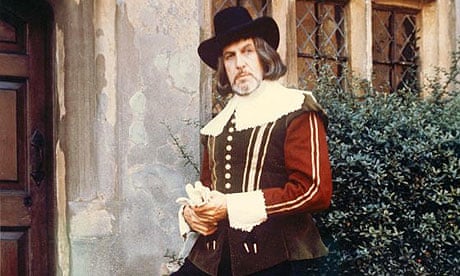 There was more black magic action in Night of the Demon (1957), Jacques Tourneur's adaptation of M.R. James's 'Casting the Runes', about a magus who is able to set a malevolent demon on his enemies and a man who finds himself marked for death by the monster. Among other things, it is famous for providing the "It's in the trees! It's coming!" sample for Kate Bush's 'Hounds of Love'. It is also that odd beast, a noir horror film, with much use made of shadow, lots of men in hats and long coats, an opening scene in which a man drives along a darkened road by night, a closing scene in night fog beside a railway track. And yet it is not fully comfortable in its embrace of the uncanny, with the magus a somewhat bumptious type and various interludes with mediums and hypnotists seeming almost like comic relief for all that they are advancing the plot of horror. In that regard it feels less certain of itself as a horror film than Cat People, Tourneur's 1942 classic.
There was more black magic action in Night of the Demon (1957), Jacques Tourneur's adaptation of M.R. James's 'Casting the Runes', about a magus who is able to set a malevolent demon on his enemies and a man who finds himself marked for death by the monster. Among other things, it is famous for providing the "It's in the trees! It's coming!" sample for Kate Bush's 'Hounds of Love'. It is also that odd beast, a noir horror film, with much use made of shadow, lots of men in hats and long coats, an opening scene in which a man drives along a darkened road by night, a closing scene in night fog beside a railway track. And yet it is not fully comfortable in its embrace of the uncanny, with the magus a somewhat bumptious type and various interludes with mediums and hypnotists seeming almost like comic relief for all that they are advancing the plot of horror. In that regard it feels less certain of itself as a horror film than Cat People, Tourneur's 1942 classic.And how fares this enjoyable film as a member of the folk horror genre? I'm not too sure. All the black magic stuff and people in posh houses again feels like something other than folk horror. On the other hand, there is a bit where the protagonist goes to Stonehenge and looks at some runes carved into the stones, calling to mind the ancient folk ways of England, so maybe we will let them away with it.
And the last film was the most recent, The Blair Witch Project from 1999. You have surely seen that found footage film about the three people who get lost in the woods while trying to make a low budget documentary about a legendary with. Looking back on it now it is striking how none of the people involved in have gone on to do that much. Given how much of a stir the film caused at the time this may be surprising. I am also struck by how short it it is, possibly because a film of people wandering around in the woods and then being woken up by strange noises at night can only go on so long before it gets boring.
It is still a most unnerving. The sense that the characters are doomed comes early to the viewer, and it is their dawning sense of their inescapable fate that gives the film its mounting dread.

Sound design corner: I know people who are into cinema sound design get annoyed when people say "oh, like music?" when the concept of sound design is outlined to them, but in Blair Witch Project it was noticeable that in the very last sequence (when the characters run around through the world's spookiest derelict houses, pretty much knowing they are about to die) the film sneaks some low volume music onto the soundtrack. This should break the illusion that this is unmediated found footage, but the volume is so low and the scene so engaging that most audiences probably do not notice.
Folk horror credentials: well there is a witch in it (or mentioned in it) and there is a fair bit about folk beliefs and folk lore (albeit of the completely made up variety).
So there you go. After reading all this, what do you understand by the term Folk Horror?
For more Folk Horror action, see my account of interesting conference A Fiend in the Furrows here and here.
image sources
Night of the Demon (Verdoux)
The Demon (BFI)
Blair Witch Project: the basement (The Dissolve)


